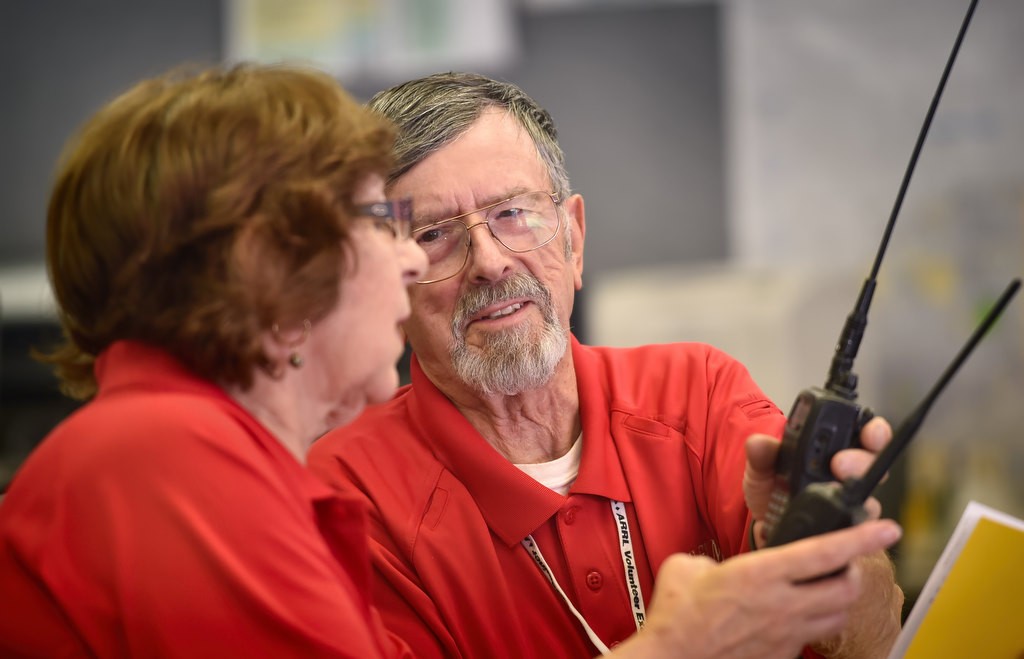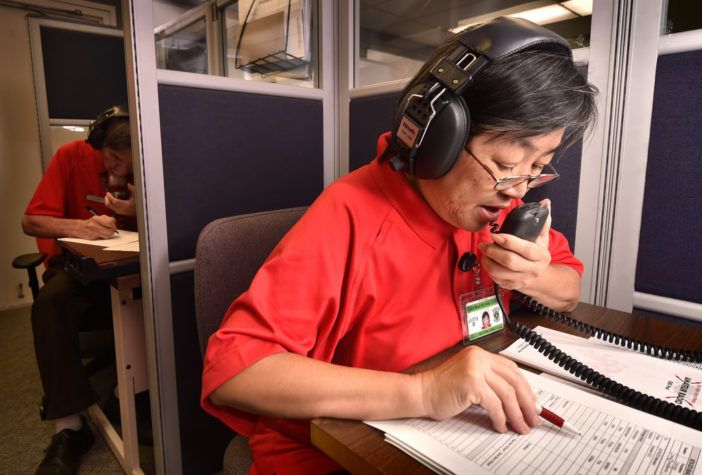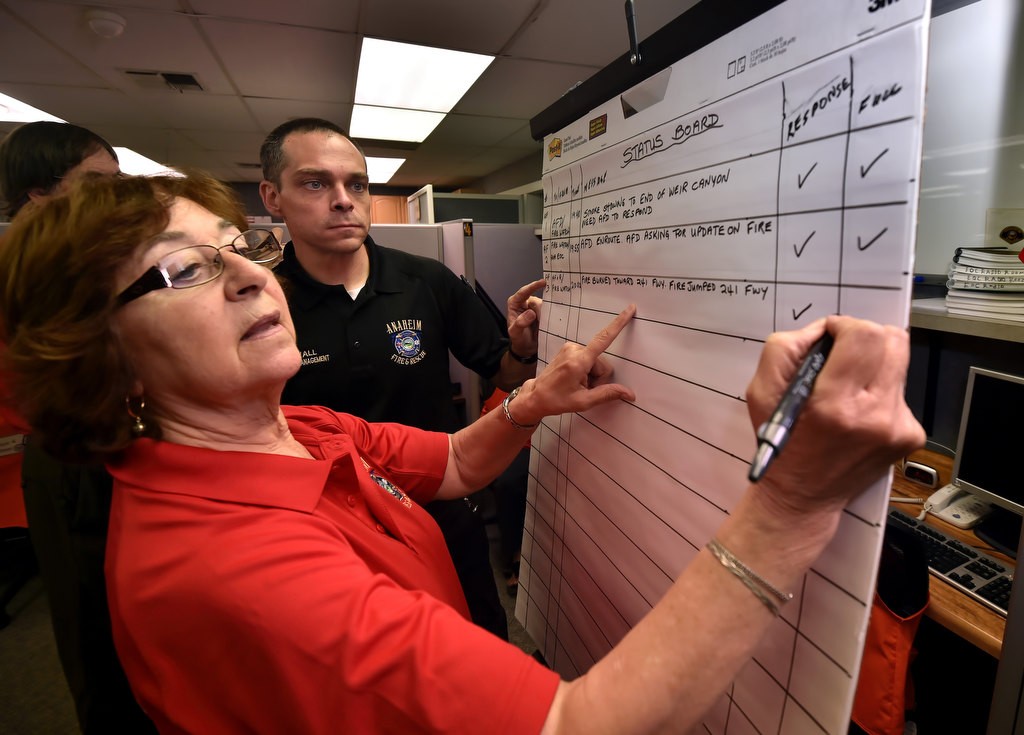When Hurricane Katrina knocked out telephone service and wireless networks, it was amateur radio operators who came to the rescue, transmitting vital information to first responders and medical personnel.
And when traditional communication links were crippled by the earthquake in Haiti, amateur radios were often the only reliable means of reporting conditions and garnering resources where they were needed.
Should an earthquake, fire, storm or any other disaster disrupt communication channels in and around Anaheim, the 22 volunteers on Anaheim Fire & Rescue’s Radio Amateur Civil Emergency Service (RACES) would be just as prepared to answer the call.
Anaheim Fire & Rescue’s RACES volunteers are trained ham radio operators who are licensed by the FCC to transmit during disasters.

Anaheim Fire & Rescue’s CERT/RACES volunteers Judy Huitt, left, and Norman Todd help each other set up the frequencies on their portable radios in preparation for a drill.
Photo by Steven Georges/Behind the Badge OC
Amateur, or ham radio operators, communicate on equipment that transmits via radio frequencies, so when cell towers, the Internet and phone lines go down, ham radios still function.
Anaheim’s Emergency Operations Center (EOC) houses a ham radio hub with equipment that not only transmits voice communications, but can also send and receive photos and e-mails.
The city also has a mobile unit that is virtually a mini version of the EOC’s and can transmit from the site of a disaster.
“As amateur radio operators, we don’t rely on other infrastructure except for our volunteers and their abilities,” said Jonathan Ramos, chief radio officer for Anaheim Fire & Rescue’s RACES group. “Amateur radio has played a giant role in emergency communications in the United States.”

Anaheim Fire & Rescue’s CERT/RACES volunteers Greg Ryman and Norman Todd, sitting, set up the radios during a drill inside Anaheim’s Volunteer Communication Unit, a portable trailer complete with its own optional power generator.
Photo by Steven Georges/Behind the Badge OC
Anaheim’s population of 330,000 can swell by tens of thousands in a city with a theme park, baseball team and convention center, so being prepared is critical, said RACES assistant chief radio officer Greg Ryman.
“On a given day, the population of Anaheim doubles with the Honda Center, Disneyland and (Angels) stadium,” Ryman said. “It makes a lot of sense to be ready.”
Anaheim’s RACES team gets sent out on fire watch when red-flag conditions are present.
To stay sharp, they provide communication for local events such as 10Ks, parades and festivals.
The group also meets monthly at the city’s EOC, where they practice by staging mock disaster scenarios.

Anaheim Fire & Rescue’s CERT/RACES volunteers Daniel Jacobsen, left, and Norman Todd set up the communication radios inside Anaheim’s Volunteer Communication Unit.
Photo by Steven Georges/Behind the Badge OC
Since they fall under the umbrella of Anaheim Fire & Rescue, it is the fire chief that would make the call on when to deploy the RACES team.
But should there be an earthquake of 6.0 or higher, the team could self-deploy, Ramos said.
Members of RACES all have their own reasons why they joined the team, but one thing they all have in common is a desire to help.
“When I was a kid, I saw that there was a need for disaster communications,” Ramos said. “So when I got older, I wanted to be part of it.”
“I live here so I might as well serve here,” said Mike “Ducky” Breton, and eight-year member of RACES, who has been an emergency services volunteer since the 1970s. “You never know when the fire chief is going to activate us.”

Volunteers from Anaheim Fire & Rescue’s CERT/RACES team (Community Emergency Response Team/Radio Amateur Civil Emergency Service) gather at Anaheim’s EOC (Emergency Operations Center) to help coordinate a drill.
Photo by Steven Georges/Behind the Badge OC
Jeff DuVall, the RACES program coordinator and an administrative analyst for Anaheim, said the city is “truly lucky” to have such a dedicated group of volunteers.
“It’s not if, it’s when communication goes down,” DuVall said. “They will be there to keep the communication link going. They truly provide a very valuable service to this city.”
DuVall said qualified ham radio operators are welcome to join their RACES team.
RACES meetings are held at 6:30 p.m. on the second Tuesday of every month.
For more information, contact DuVall at 714-765-4051, e-mail RACES@anaheim.net or visit anaheim.net/RACES
 Behind the Badge
Behind the Badge




